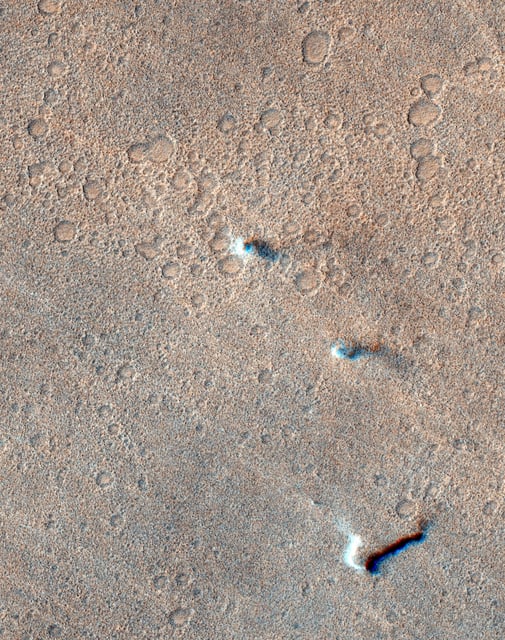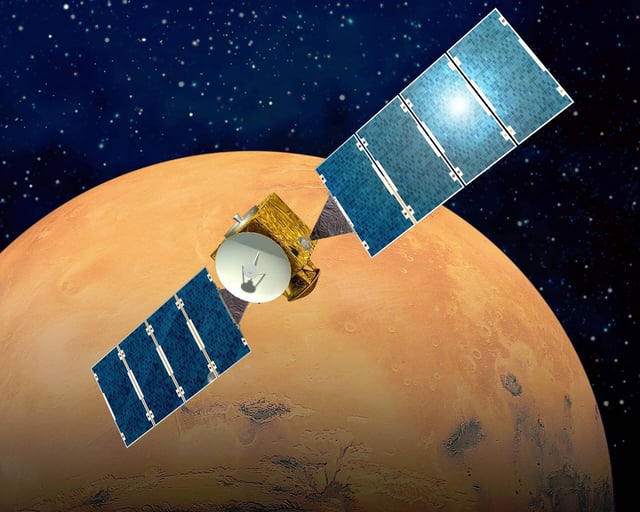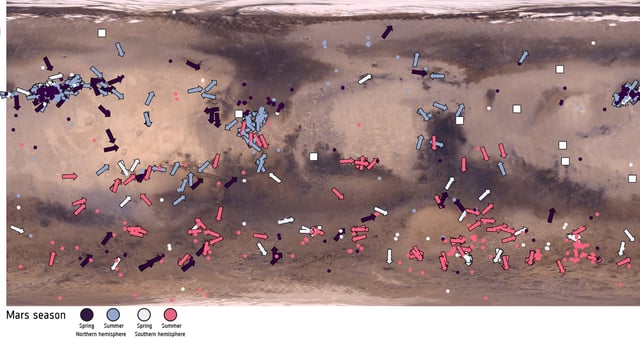Overview
- A Science Advances study logged 1,039 dust devils from ESA’s Mars Express and ExoMars TGO archives, with measured near-surface winds up to about 158–160 km/h and an average near 64 km/h, though the method likely undercounts slower events.
- The team exploited small timing offsets between camera channels and used a neural network to scan more than 50,000 images, deriving speeds and directions even though the orbiters were not built to measure wind.
- Detections span plains, volcanic terrains, and highlands, with clustering in source regions such as Amazonis Planitia, and activity peaking in local spring and summer between roughly 11:00 and 14:00.
- The open catalog lists locations for all 1,039 events and motion vectors for 373, and it will be updated as new images are acquired.
- Findings indicate stronger and more widespread surface winds that efficiently loft dust in Mars’s thin air, improving climate and dust-cycle models and informing landing-site forecasts, rover power management, and planning for missions such as ExoMars Rosalind Franklin.



